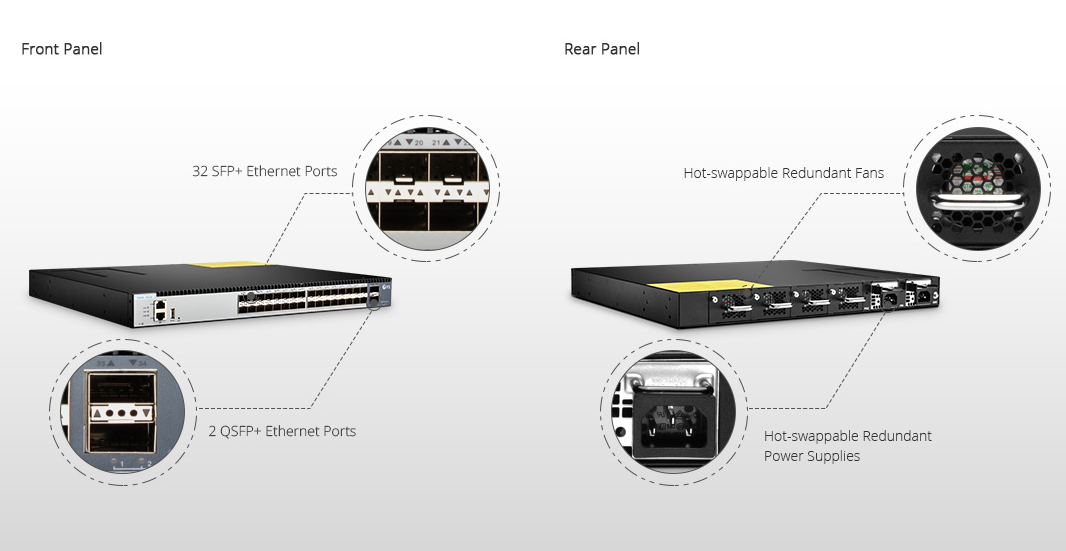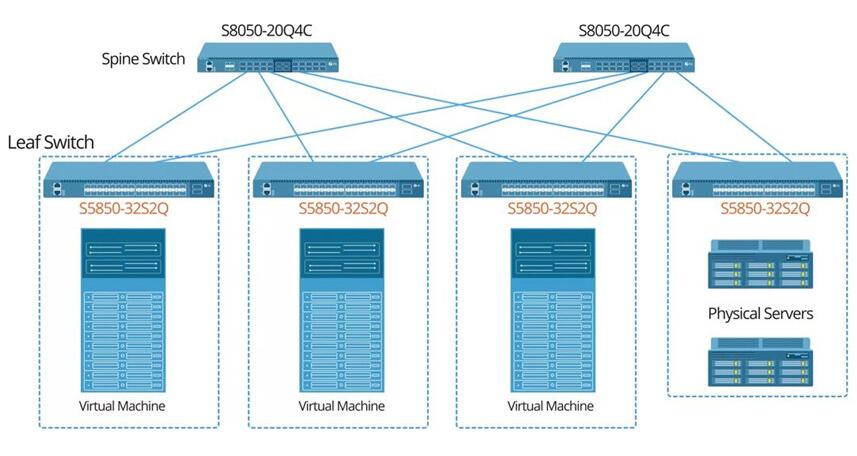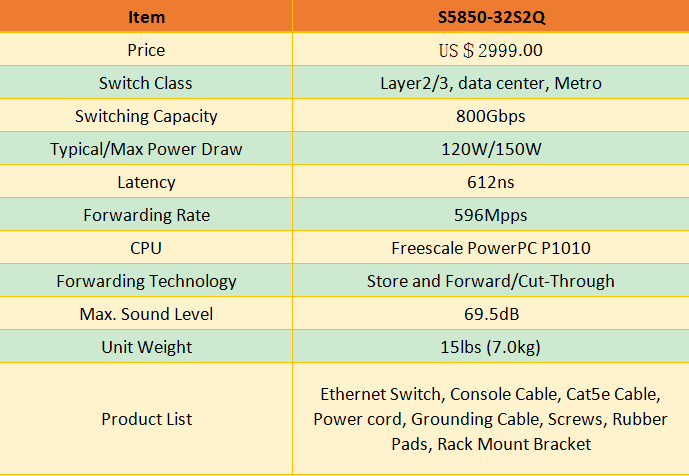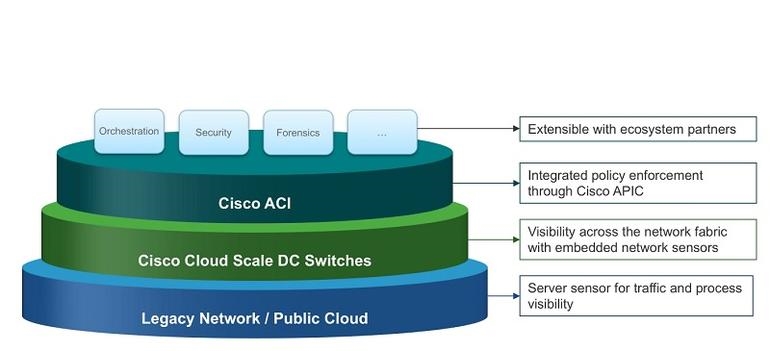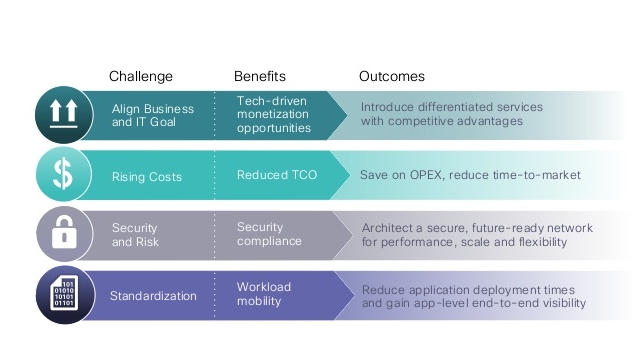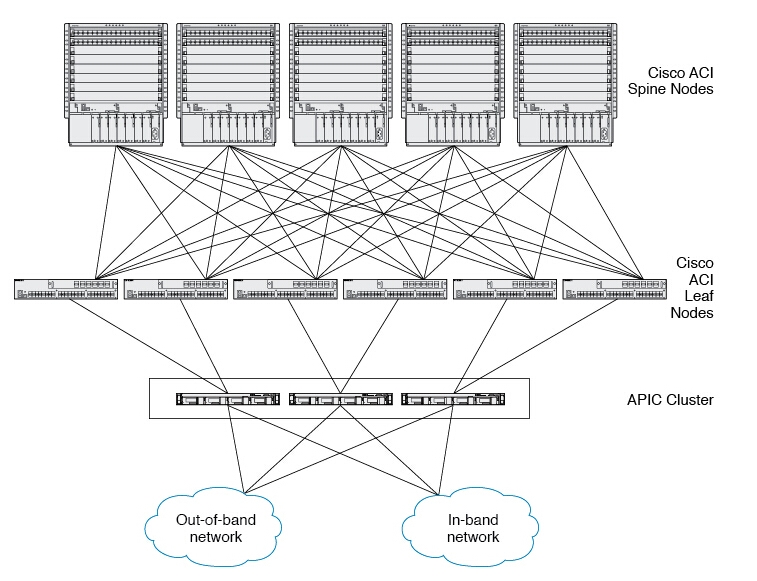Industrial Ethernet has fast become the network of choice for the interconnection of data center devices, due to its incredible speed, bandwidth, and flexibility. The market for network switch is booming as vendors compete to develop items with advanced features and functions. This, however, makes the simple choice of an Ethernet switch overly complex. 10Gb switch is often used as access or leaf switch (depending on your network architecture) in data centers, the importance of which cannot be underestimated. This article will compare some cost-effective 10Gb switches on the market, each of which costs less than $550.
Options of 10Gb Switch Under $550
In this section, we will take a brief review of some 10Gb switches that cost less than $550. The following is a 10GB network switch comparison.
MikroTik CRS226-24G-2S+IN
This switch combines the features of a fully functional router and a Layer 3 10Gb Ethernet switch. It enables ports to be removed from the switch configuration and used for routing purposes. The CRS226 has 24 10/100/1000 Ethernet ports and two SFP+ ports for 10G connectivity.
MikroTik CRS226-24G-2S+RM
CRS226-24G-2S+RM is a fully functional Layer 3 10Gb network switch. It has 24 Gigabit ports and two SFP+ cages for 10G connectivity (first SFP port supports 1.25G/10G modules, second port only 10G modules).
MikroTik CRS210-8G-2S+IN
Featuring small size and low cost, this fully functional router and a Layer 3 10Gb switch come with 8 Gigabit Ethernet ports and two SFP+ cages for 10G connectivity (first port supports 1.25G/10G modules, second port only 10G modules).
D-Link DGS-1510-28X
The DGS-1510-28X is a smart managed 10Gb switch that contains 24 10/100/1000 Mbps ports plus 4 10G SFP+ ports. It is ideal for deployments in the SME/SMB core with its 10G uplinks connecting with servers equipped with 10G port connectivity. For medium to large scale enterprise deployment, it can serve as a good interconnection between the core switch and edge switch.
D-Link DGS-1510-20
The DGS-1510-20 contains 16 10/100/1000 Mbps ports, 2 Gigabit SFP ports and 2 10G SFP+ ports. It belongs to D-link DGS-1510 series like DGS-1510-28X, providing a reliable, scalable, and modular interconnection with rich capabilities and simplified flexibility.
Ubiquiti ES-48-Lite EdgeSwitch
Ubiquiti ES-40-Lite is a fully managed 10Gb switch that delivers robust performance and intelligent switching for growing networks. It offers both Layer 2 switching features and Layer 3 routing capability, supporting 48 10/100/1000 Mbps RJ45 Ethernet ports, 2 1/10 Gbps SFP+ Ethernet ports and 1 Gbps SFP Ethernet ports.
ZyXEL XGS1910-24
The ZyXEL XGS1910-24 is a smart 10Gb switch built to fulfill increasing network demands for small and medium businesses (SMB). With 20 10/100/1000 ports, 4 combo Gigabit SFP ports and 2 x 10 Gigabit SFP+ ports, it allows SMBs to deliver higher bandwidth for congestion relief and smooth data delivery.
FS S3900 Switch
FS S3900 series, which currently involves three modules, is a high-performance 10G L2+ stackable switch perfect for Service providers (ISPs) and Multiple System Operators (MSOs). Moreover, they’re ideal for SMB, enterprise, and campus networks. Compared with other non-stackable switches, the stackable switch series have their own benefits: higher port density, higher speed, and easier management. These series are all managed switches which comply with the IEEE 802.3az specification. The SFP+ ports can be connected via transceivers and patch cables or via DAC or AOC directly for stacking, making the stacked switches one unit. With an advanced feature set, S3900 series is designed to bring high availability, comprehensive security, robust multicast control, and advance QoS to the network edge, while maintaining simple management.
FS S3900-24T4S Switch
With 128 Gbps switching capacity, the S3900-24T4S switch has 24 Gigabit RJ45 ports and 4 x 10 Gbps SFP+ ports, which enables high performance and flexibility. The 4 built-in 10G SFP+ ports support uplinks and stack links of up to 10 Gbps, increasing the performance of access network.
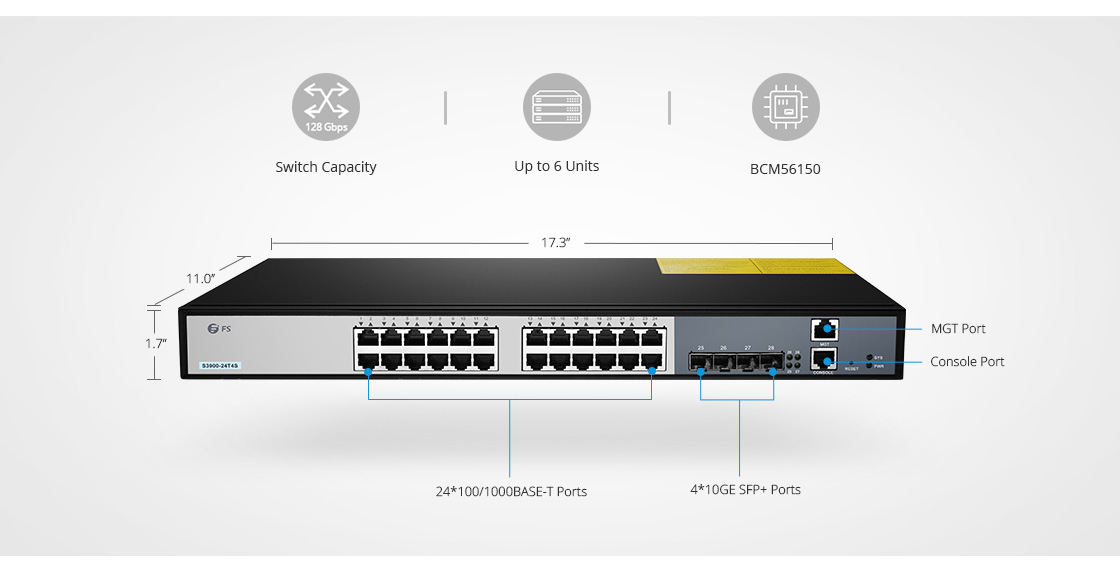
FS S3900-48T4S Switch
Equipped with 48 x 100/1000Mbps RJ45 Gigabit ports, the S3900-48T4S switch affords large switching capacity and achieves great forwarding performance. In addition, S3900-48T4S switch offers low power consumption and 1+1 redundancy power, ensuring high network reliability and availability.
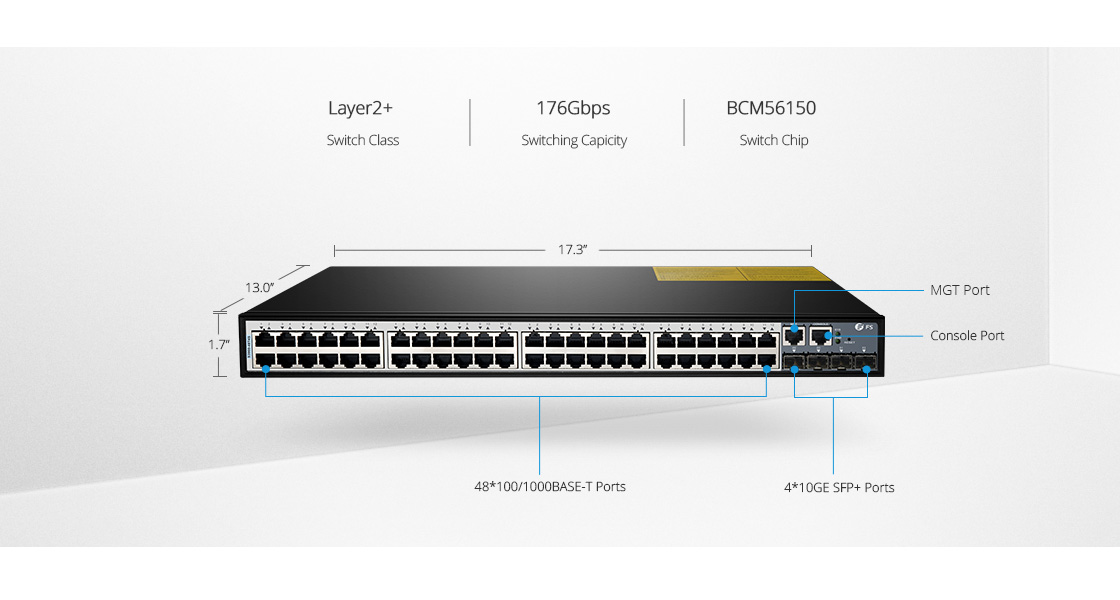
FS S3900-24F4S Switch
Apart from 20 x 1Gbps SFP ports and 4 x 10Gbps SFP+ ports, the S3900-24F4S switch has 4 combo SFP and 4 RJ45 combo ports, therefore making it possible to meet users’ needs to configure their unique application requirements—to use both copper and fiber cabling to achieve 1G transmission. In all, S3900-24F4S should be taken into consideration to achieve flexibility and reliability.
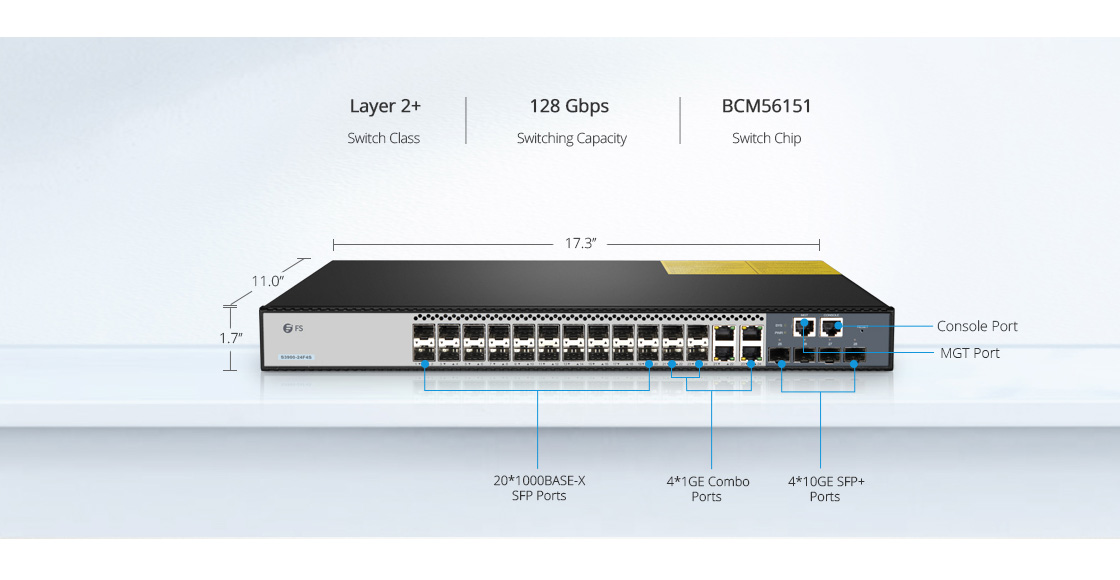
10Gb Switch: How to Make the Final Decision?
Besides the cost, there are still a variety of factors to weigh when choosing a 10Gb network switch, such as port configuration, switching capacity, power consumption, and switch class. To make it simple, we use the chart below to further illustrate it.
| Switch |
Price |
Switching Capacity |
Power Consumption |
10/100/1000 Ethernet ports |
Gigabit SFP |
SFP+ ports |
Layer Supported |
| MikroTik CRS226-24G-2S+IN |
$289.00 |
88 Gbps |
21W |
24 |
/ |
2 |
Layer 3 |
| MikroTik CRS226-24G-2S+RM |
$299.00 |
88 Gbps |
21W |
24 |
/ |
2 |
Layer 3 |
| MikroTik CRS210-8G-2S+IN |
$229.00 |
56 Gbps |
13W |
8 |
/ |
2 |
Layer 3 |
| D-Link DGS-1510-28X |
$394.99 |
128 Gbps |
22.3W |
24 |
/ |
4 |
Layer 2/3 |
| D-Link DGS-1510-20 |
$292.88 |
76 Gbps |
20.3W |
16 |
2 |
2 |
Layer 2/3 |
| Ubiquiti ES-48-Lite |
$374.55 |
140 Gbps |
56W |
48 |
2 |
2 |
Layer 2 |
| ZyXEL XGS1910-24 |
$544.50 |
88 Gbps |
32W |
20 |
4 combo |
2 |
Layer 2 |
| FS S3900-24T4S |
$280.00 |
128 Gbps |
21W |
24 |
/ |
4 |
Layer 2+ |
| FS S3900-48T4S |
$410.00 |
176 Gbps |
45W |
48 |
/ |
4 |
Layer 2+ |
| FS S3900-24F4S |
$400.00 |
128 Gbps |
43W |
4 combo |
20 |
4 |
Layer 2+ |
We can conclude from the chart that, apart from the price. The port configuration and speed also matters when purchasing a 10gb switch. These two factors determine the switching capacity. So you have to consider the amount of traffic to run through the 10Gb switch and select one that can accommodate all the dataflow. Power consumption is also a very important aspect as it defines the operating cost in the long run. Think about tens of thousands of network switch in a middle-sized data center, a power efficiency switch can save you a great amount of money.
Conclusion
10GbE switch is the most effective solution for labs or small deployments. This article compares only a fraction of the important parameters of these 10 Gigabit switches. Once you have gone through all these factors, the choice can thus be made based on your specific condition. Are there any other factors your organization considers when preparing to buy a switch 10Gb? What do you think are the most important factors? Post your comments below.
Related Article: 10G ToR/Leaf Ethernet Switch: What Is the Right Choice??
FS.COM LAN Access 10G Switch Analysis

